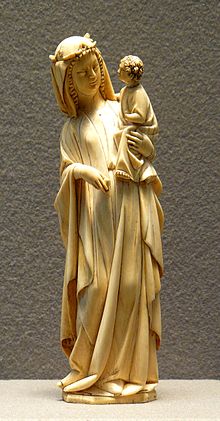French art
From Wikipedia, the free encyclopedia
French art consists of the visual and plastic arts (including French architecture, woodwork, textiles, and ceramics) originating from the geographical area of France. Modern France was the main centre for the European art of the Upper Paleolithic,[citation needed] then left many megalithic monuments, and in the Iron Age many of the most impressive finds of early Celtic art. The Gallo-Roman period left a distinctive provincial style of sculpture, and the region around the modern Franco-German border led the empire in the mass production of finely decorated Ancient Roman pottery, which was exported to Italy and elsewhere on a large scale. With Merovingian art the story of French styles as a distinct and influential element in the wider development of the art of Christian Europe begins.

| French art history |
|---|
| Historical periods |
| French artists |
| Thematic |
| Movements |
| See also |
France can fairly be said to have been a leader in the development of Romanesque art[citation needed] and Gothic art, before the Renaissance led to Italy becoming the main source of stylistic developments until France matched Italy's influence during the Rococo and Neoclassicism periods[citation needed] and then regained the leading role in the Arts from the 19th to the mid-20th century.[citation needed]